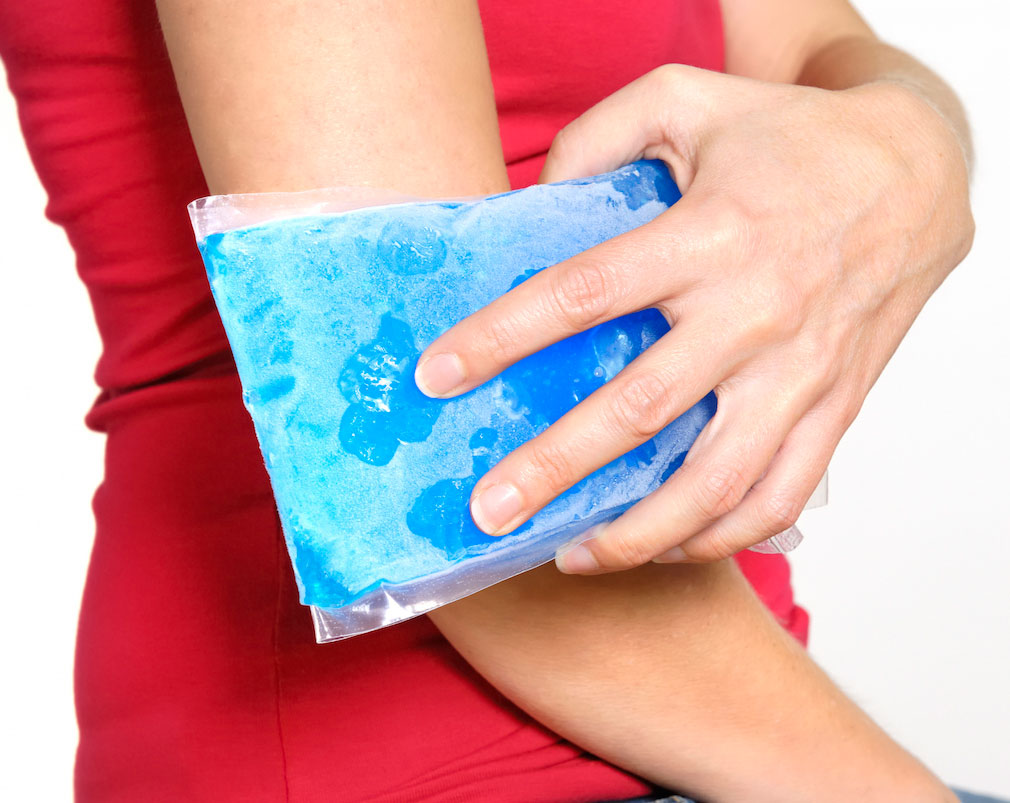As as a Certified Athletic Trainer on Hartford HealthCare’s Sports Medicine team, Rebecca MacEwan treats all kinds of injuries on and off the field.
Sometimes the technique she uses help an injured athlete is the most common, ice. Ice and other cooling methods are great for treating many conditions, says MacEwan, as they’re effective with pain, swelling, muscle spasms, muscle guarding, bursitis, tendonitis, and muscle soreness. Cold has its greatest benefit when the injury first happens. There is general agreement that the use of cold is the initial treatment for most injuries of the musculoskeletal system (strains, sprains, fracture).
When you’re injured, your body goes into a protection mode that causes swelling. Swelling is a good thing. It means the body is sending cells to help repair the damage. But too much swelling can damage the healthy cells by cutting off the oxygen supply, making the injury worse. Ice helps to limit this by constricting the blood flow to the area to help keep the swelling at a minimum. Ice is also a pain reliever. Applying ice numbs an injured area, helping to decrease the pain. It does this by helping to slow down nerve activity.
It’s generally recommended that ice should be applied in cycles of 15-20 minutes on, followed by 40 minutes off. Most people don’t think of ice as a burning agent, but used improperly a burn can happen. This is especially true with icepacks kept in the freezer.
To protect the skin, use a barrier between the ice and your skin. This doesn’t need to be anything fancy — a shirt, towel, or cloth will do. You should also monitor your skin’s appearance and feel. Once the area is numb, you have received the full benefit of the ice for that treatment.
Keeping it on longer than 20 minutes can actually have the opposite response from the body that we want.
To get the full benefit of ice, you should apply the RICE principle: Rest, Ice, Compression, and Elevation. As with any injury, if it doesn’t start responding within a day or two, or you suspect there may be a more serious injury, seek medical attention.
For more information about Hartford HealthCare Sports Medicine, please visit Mysportshealth.org

